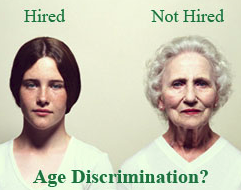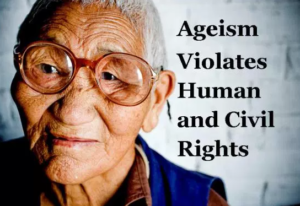
We have written about AGEISM before. Ageism is where an older adult is treated as a less important individual in the marketplace.
Does the younger person beside you seem to get priority or better attention than you do? Do you feel that you are not receiving the same attention/care/assistance that a younger person alongside you seems to be receiving? If you answer in the affirmative to these questions, you are a victim of “ageism” and you should stand up against this kind of mistreatment, for yourself and for your peers in you demographic.
AGEISM is a real issue in our society today. Seniors are now the largest part of that demographic. Is it becoming a serious problem yet? Are seniors being treated as second class citizens?
Many journalists, columnists and writers of published opinions are drawing attention to the issue that seniors are being treated as lesser citizens.
Zoomer Magazine
Medical care can mean the difference between proper treatment and mistreatment
Recently, Zoomer magazine columnist, Wanda Morris, wrote a column about ‘wait times:’

The Real Cost of Wait Times
By Wanda Morris
FOR THE MAJORITY of Zoomers/CARP members, the single most important priority for CARP in 2017 should be the reduction of wait times for medical procedures. And when you look at the data on procedures like hip and knee replacements, it’s hard to disagree.
In B.C., for example, patients experience some of the longest wait times in the country. The BC election should have dealt with the problem where people wait 12 to 24 months for knee and hip replacements.

The obvious hardship for patients is the severe pain they endure while waiting. After all, people aren’t even considered candidates for joint replacement unless they are experiencing significant, unmanageable pain. But this isn’t the only negative aspect of unconscionable delays in scheduling surgeries. Extended wait times result in significant increases in recovery time because muscles atrophy while the patient waits for help.
The system in B.C. was even worse until the province was shamed into making an overdue investment in MRIs. Things were so bad people were turning up for appointments a year early since they hadn’t realized the date on their notice of appointment was more than a year away.
While B.C. stands out as particularly problematic, even provinces where wait times are a bit better still keep older Canadians waiting a long time. Are we seeing the insidious impact of ageism at play?
If there were year-long waits for procedures that kept children out of school or younger adults out of the workforce, would those waits be accepted as a necessary part of controlling health-care costs? Are long wait times made even worse because health-care systems triage younger patients, leaving older ones at the back of an ever-lengthening queue?
Our medical schools also appear to be impacted by ageism. Take the contrast between training in pediatrics and geriatrics. No doctor graduates without some training in pediatrics, but many graduate without having taken a single course in geriatrics. When you compare the medical needs of those 65 and over with those of people under 16, this makes no sense.
According to the Canadian Medical Association, we currently have 2,518 pediatricians and 265 geriatricians. With the number of Canadians under 15 being approximately equal to the number over 65 (about six million each), there is clearly a problem.

How often have we seen signs in doctors’ offices that say: “Your appointment is to address one issue. If you have more than one ailment to discuss, please make another appointment.” This is absurd. As we age, we may be living with multiple chronic conditions. While we can fault the doctors who want to see as many patients as possible, the greater blame lies with healthcare systems that fail to acknowledge the reality of older adults’ health and make no provision for doctors to bill for more than one complaint per patient per visit. We’ve heard some doctors refer to unwanted older patients as GOMERs, a pejorative acronym that stands for Get Out of My Emergency Room.
Imagine, instead, if all provinces provided older patients with medical teams, and patients could sit down with nurse practitioners to share all their concerns. Imagine a system where doctors were paid by time spent, rather than the number of patients seen, and backed up by social workers and dietitians, so that patients were not only treated for all current issues but also received preventive care. Underfunding primary care to patients through GPs may be wise, but it’s pound-foolish.
While there are no quick and easy solutions, investing in more home care and better access to primary care teams would be a good place to start. At CARP, we will continue to shine a light on ageism in health” care and to fight not only for reduced wait times for medical procedures but for appropriate, effective and respectful care at all times.

Wanda Morris is vice-president of advocacy and chief operating officer of CARP.
Zoomer magazine, March, 2017
Toronto Star
A vibrant, dynamic and energized lady, 59 years old, cannot find a roommate with whom to share living accommodations. Read her story to see another example of AGEISM in our society today: 59 is the loneliest number [Source: Emma Teitel, Toronto Star ]







